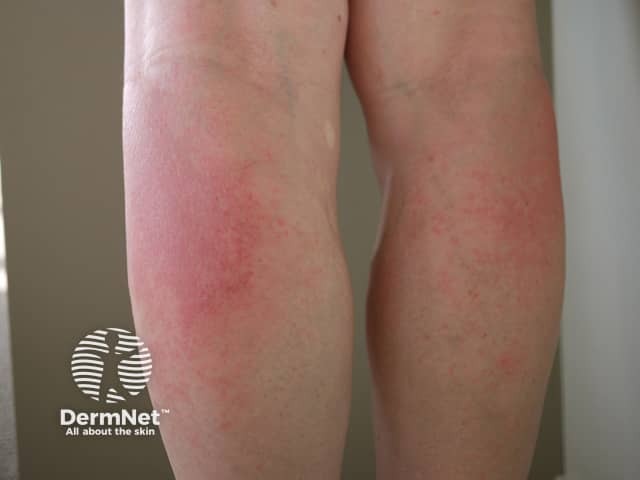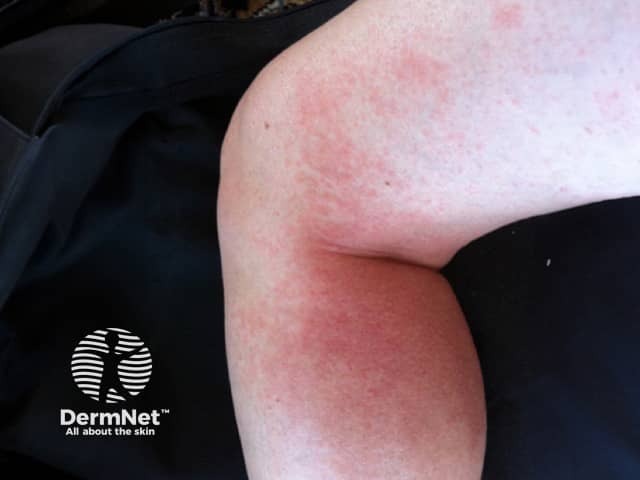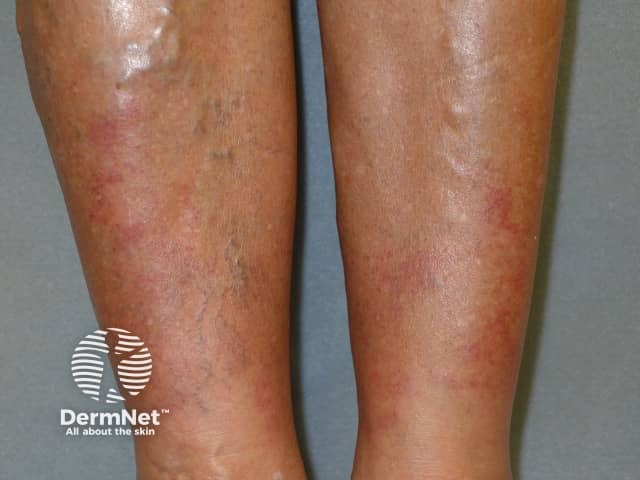Main menu
Common skin conditions

NEWS
Join DermNet PRO
Read more
Quick links
Reactions Blood vessel problems
Author: Brian Wu PhD. MD Candidate, Keck School of Medicine, Los Angeles, USA; Chief Editor: Dr Amanda Oakley, Dermatologist, Hamilton, New Zealand, June 2015.
Introduction Clinical features Demographics Differential diagnoses Causes Diagnosis Treatment
Exercise-induced vasculitis is a harmless form of cutaneous small vessel vasculitis. It is also called golfer's vasculitis.
It is a neutrophilic inflammatory disorder involving the small or medium-sized blood vessels of the skin and subcutaneous tissue.
When only the small capillary vessels are involved, it is also called exercise-induced capillaritis.
Exercise-induced vasculitis mainly affects one or both lower legs and thighs, with single or multiple episodes of a rash with the following characteristics:
The patient is otherwise well, without fever, malaise or other symptoms.
Lesions resolve over 3 to 4 weeks. A purplish-brown mark may persist for longer.

Exercise-induced vasculitis

Exercise-induced vasculitis

Exercise-induced vasculitis

Exercise-induced vasculitis
Patients that present with exercise-induced vasculitis are often female and over 50 years of age. They are most often otherwise healthy and active.
Common activities which can trigger exercise-induced vasculitis include:
It is also suspected that there might be a genetic or familial factor causing susceptibility to exercise-induced vasculitis.
Other forms of cutaneous or systemic vasculitis may be aggravated by exercise but are not primarily due to exercise. In these cases, the vasculitis may be due to an underlying disease or condition. Exercise-induced capillaritis generally presents with milder clinical features.
As the name implies, exercise-induced vasculitis is typically induced by strenuous muscle activity, particularly during warm and humid weather. It is thought that the temperature regulation mechanisms within the calf muscles break down, leading to reduced venous return and blood stasis. The end result is inflammation and vascular injury.
Diagnosis of exercise-induced vasculitis can be difficult. It is based on history and physical examination. Some people may undergo investigations, such as:
Laboratory tests and imaging are undertaken for 2 main reasons.
Skin biopsy shows leukocytoclastic vasculitis in exercise-induced vasculitis. Direct immunofluorescence examination of new lesions shows complement and immunoglobulins in walls of the blood vessels.
Management of exercise-induced vasculitis involves:
Patients with recurrent episodes of exercise-induced vasculitis should avoid vigorous exercise in warm weather. Although there are no reports of their use in exercise-induced vasculitis, active treatments that can control small vessel vasculitis include:
Systemic steroids, eg prednisone, are reserved for severe cutaneous vasculitis eg with blistering or ulceration, and are not necessary for exercise-induced vasculitis.